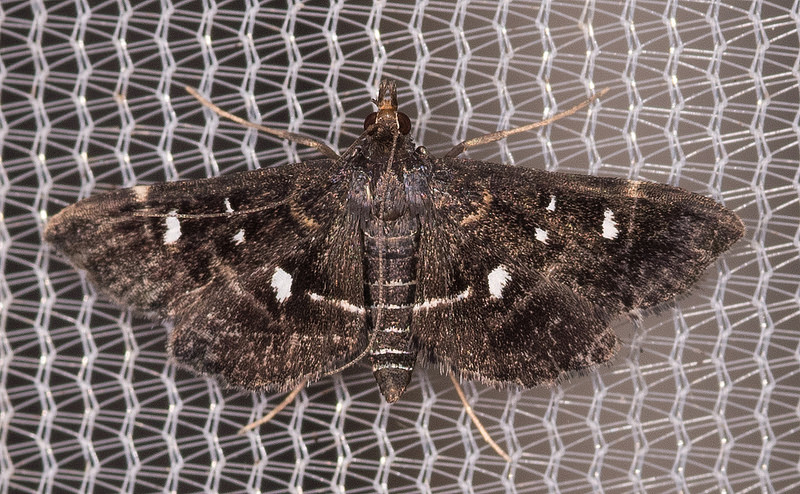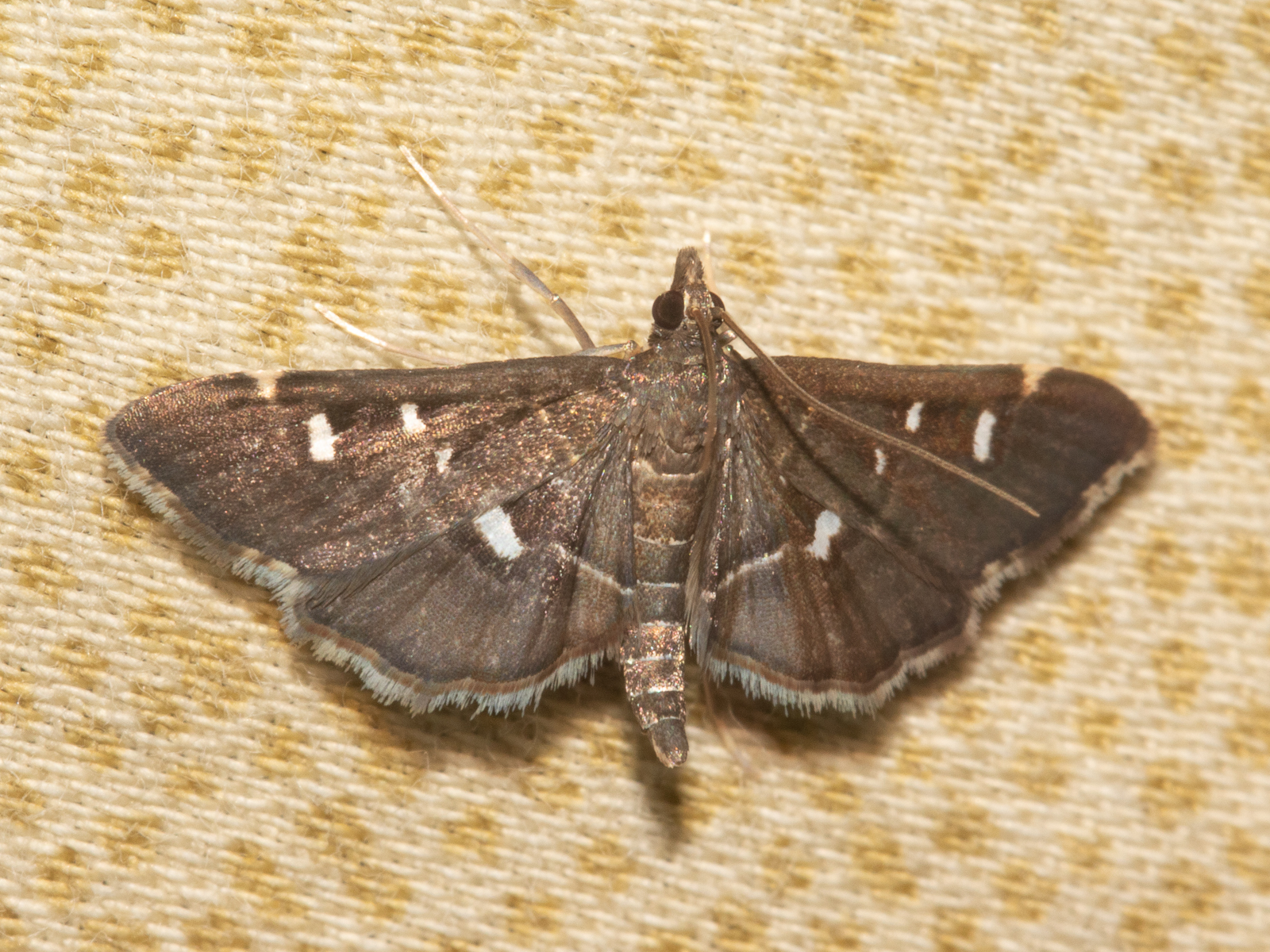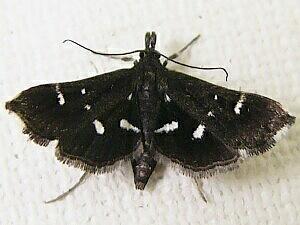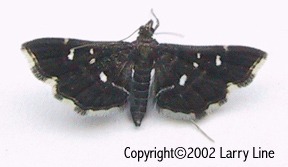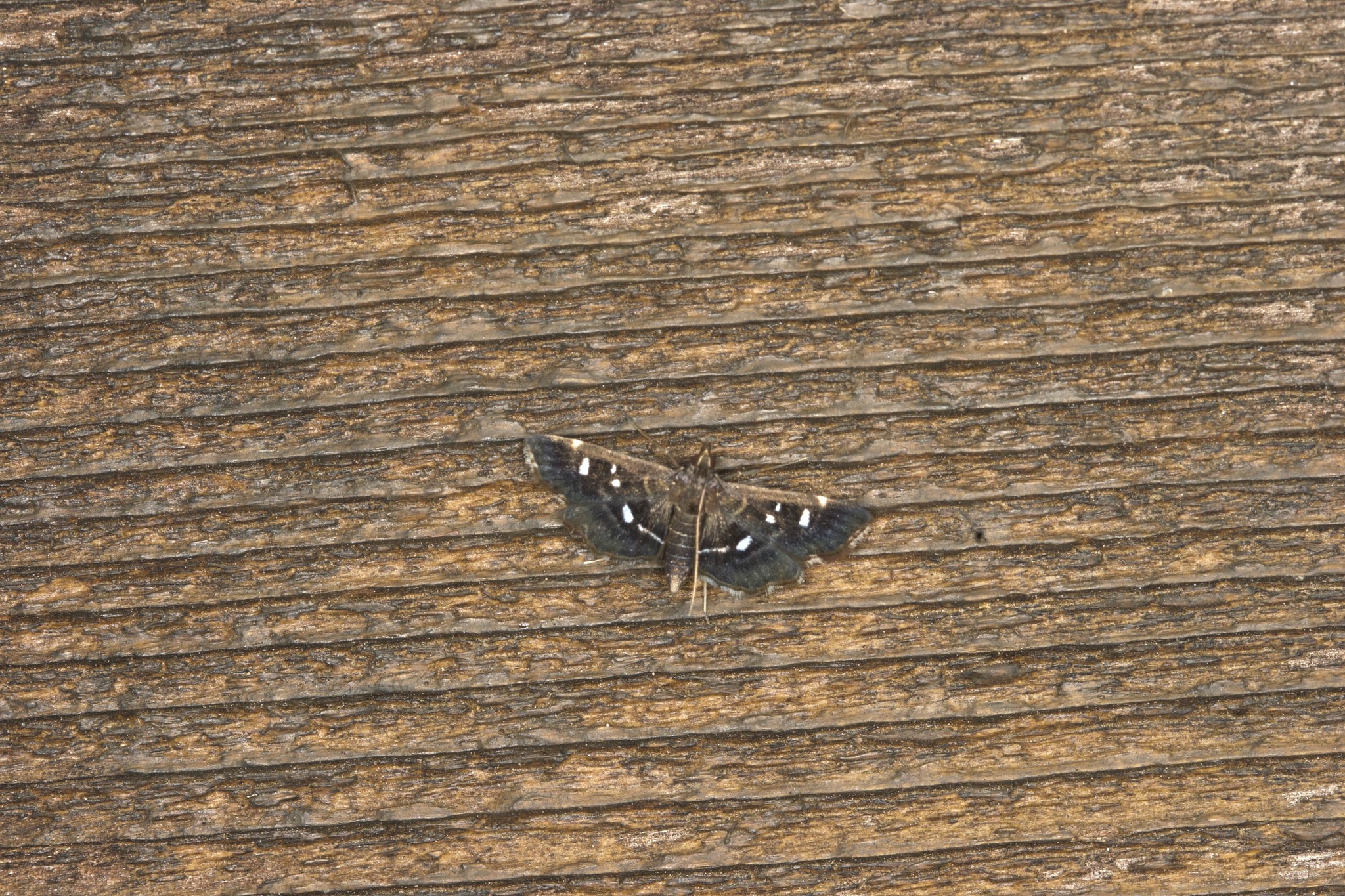Map Snapshot








29 Records
Status
"Diathrausta harlequinalis and D. reconditalis can not be distinguished reliably from photos" (BugGuide).
Seasonality Snapshot
Use of media featured on Maryland Biodiversity Project is only permitted with express permission of the photographer.
A Recondite Webworm Moth in Frederick Co., Maryland (9/10/2016). Verified by Roger Downer/BAMONA.
View Record Details
Media by
Mark Etheridge.
Recondite Webworm Moth in Howard Co., Maryland (6/12/2020). (c) Timothy Reichard, all rights reserved.
View Record Details
Media by
Timothy Reichard.
A Recondite Webworm Moth in Prince George's Co., Maryland (9/7/2007).
View Record Details
Media by
Bob Patterson.
A Recondite Webworm Moth in Howard Co., Maryland (2002).
View Record Details
Media by
Larry Line.
Recondite Webworm Moth in Anne Arundel Co., Maryland (8/29/2021). (c) Hugh McGuinness, all rights reserved.
View Record Details
Media by
Hugh McGuinness.
Source: Wikipedia
| Diathrausta reconditalis | |
|---|---|
| Scientific classification | |
| Domain: | Eukaryota |
| Kingdom: | Animalia |
| Phylum: | Arthropoda |
| Class: | Insecta |
| Order: | Lepidoptera |
| Family: | Crambidae |
| Genus: | Diathrausta |
| Species: | D. reconditalis
|
| Binomial name | |
| Diathrausta reconditalis (Walker, 1859)
| |
| Synonyms | |
| |
Diathrausta reconditalis, the recondite webworm moth, is a moth in the family Crambidae. It was described by Francis Walker in 1859.[1] It is found in North America, where it has been recorded from Alabama, Arizona, Florida, Indiana, Kentucky, Maryland, Massachusetts, Mississippi, New Hampshire, New York, North Carolina, Ohio, Oklahoma, Ontario, South Carolina, Tennessee and West Virginia.[2]
The wingspan is about 18 mm. The wings are dark brown or nearly black with greenish reflections. There are three white spots on the forewings.[3]
References
[edit]- ^ Nuss, M.; et al. (2003–2014). "GlobIZ search". Global Information System on Pyraloidea. Retrieved 2014-07-15.
- ^ Moth Photographers Group. Mississippi State University.
- ^ Entomologica Americana 3: 127
